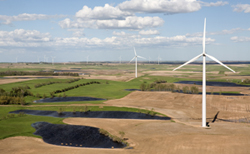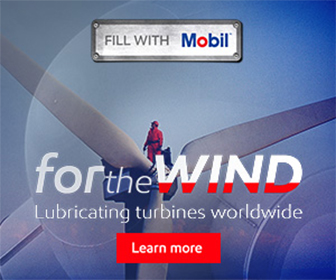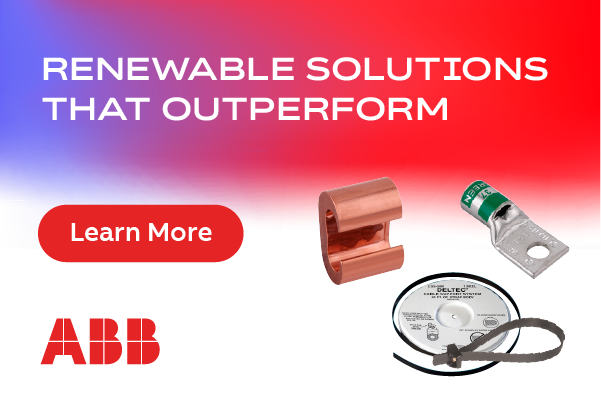Maximizing Return on Investment in Wind Energy Collection Systems
 In 2006, the United States government made wind energy a priority for the administration with a goal of 20% of usable energy being derived from wind by 2030. Since this projection, more than 250 GW of wind energy has been installed in the US, with the peak occurring in 2009. A desire for energy independence, low CO2 emissions, and creation of jobs were all factors in the growth of this market. Cable industry analysis has projected flat installations for 2012, with a strong surge in wind energy installations projected for 2013 and 2015.
In 2006, the United States government made wind energy a priority for the administration with a goal of 20% of usable energy being derived from wind by 2030. Since this projection, more than 250 GW of wind energy has been installed in the US, with the peak occurring in 2009. A desire for energy independence, low CO2 emissions, and creation of jobs were all factors in the growth of this market. Cable industry analysis has projected flat installations for 2012, with a strong surge in wind energy installations projected for 2013 and 2015.
A good understanding of the importance of maximizing the return on investment is critical to the success of a wind farm. The perseverance of the energy industry requires continued innovation for improving reliability and efficiency to produce more competitive wind power-generated electricity. Having electrical design engineers involved in the early stages of project development results in system reliability and efficiency being addressed in the design and selection of materials.
The reliability of collection systems is based on the life expectancy of the wind energy farm infrastructure components. Improving system reliability can lead to lower operation and maintenance expenses, and fewer forecasting penalties paid to the market. Improved reliability can also lead to a perceived public image for a company, and defer or eliminate the need for future capital expenditures. The goal of improving collection system efficiency is to minimize the amount of losses to help turn every watt generated into revenue for that wind farm.
The traditional collection system architecture includes two underground feeders, each with approximately 25 MW per feeder. A typical 100 MW wind farm would have four feeders with up to three turbines linked to each feeder. This varies depending on the wattage for each turbine, which can range from 1.5 MW GE to 3.0 MW GE per turbine. The topology starts with the turbine that enters a step-up transformer to increase the voltage to 35,000 volts. There is an in-and-out connection on each generator step-up transformer, so the power flows back up through the collection system to the substation to deliver it out to the system. A typical wind farm includes the turbines, step-up transformers, underground collection system, and sometimes a sectionalizing cabinet (also called a junction box), which is how the system connects and delivers power back up to the substation. A grounding transformer is also included to protect the equipment from being damaged.
The typical collection system components, including the main power transformer, feeder breaker, underground cable, overhead collection systems, sectionalizing cabinets, generator step-up transformers, and turbines, come in a variety of types. Because each type offers its own advantages and disadvantages, it’s best to work with an electrical engineer to determine the specific needs in the development stages of a project. For example, a silicone steel core transformer is less expensive initially, but can lead to more loss in energy versus an amorphous metal core. The amorphous metal core costs more up front, but leads to dramatically fewer losses. The same holds true for transformer types—the more expensive the transformer, the lower the loss.
Early examination of wind farm components offers a better chance to maximize the return on investment and minimize losses. Keeping losses down yields a higher amount of energy delivered to the grid, providing more revenue for the wind farm. Another example of increasing the efficiency of a wind farm is upsizing the typical underground 345 kV cable conductor. This comes with a higher initial cost, but can reduce the loss significantly, delivering more dollars to the grid. Overhead collection system installations—partial or full—are a lower initial cost at a much higher loss ratio than that of a typical underground collection system.
If an engineering firm is involved early on in the project development process, they can help purchase the generator step-up transformer and the main power transformer to maximize the return on investment for those pieces of equipment. With the assistance of various types of data, including the owner’s financial model, wind resource information, and the power curve for the turbine, it’s possible to determine the geographic location of the turbine and layout the overhead/underground collection system. Calculations can be determined for the cost of the installation and the cost of the annual energy loss.
Comparing the net present value, determinations can be made to upsize or change equipment based on this amount. Final collection system design recommendations can then be made by the electrical engineer for a maximum return on investment. Proper wind farm planning will lead to informed decision-making on investment opportunities and higher profitability, specific to one’s needs.
Gary Zahalka is the VP of Generation, Planning, and Renewable Energy for Ulteig Engineers, Inc.
This article stems from a collaborative presentation produced by The Dow Chemical Company and Ulteig.
The Dow Chemical Company
www.dow.com
Ulteig Engineers, Inc.
www.ulteig.com
Author: Gary Zahalka
Volume: January/February 2012









